
Marsh sparrow locations
For the past few years, I have been trying to see and photograph marsh sparrows: Seaside, Saltmarsh, and Nelson's Sparrows. The Saltmarsh and Nelson's Sparrows were formerly known as one species - Sharp-tailed Sparrows, and were then separated into two species known as Saltmarsh Sharp-tailed and Nelson's Sharp-tailed Sparrows. The "Sharp-tailed" portions of their names are now commonly dropped. In general, Saltmarsh Sparrows are distinguished from Nelson's by a better defined facial pattern, coarser breast streaking, and little or no orange on their neck and breast. Saltmarsh and Nelson's Sparrows hybridize where they are co-located, and these hybrids are regularly seen along the New England coast.
These three species are difficult to see and photograph. They are usually found in tall grasses next to the shore line, and stay close to the ground. When they fly, it is usually a short flight before dropping down into the vegetation. It is easier to see them during and immediately after high tide when they are forced to retreat closer to drier ground. The western coast of Chesapeake Bay is a good place to find these species.
Previously, I had seen Seaside Sparrows at Bethel Beach in August 2014, and Nelson's Sparrows at Pleasure House Point in November 2014, but the Saltmarsh Sparrow had eluded me. On November 10, 2015, George Harris posted that he had seen all three of these species at the end of Maryus Road in Gloucester Point, Virgnia, in an area known as Guinea Marsh.

Marsh sparrow locations
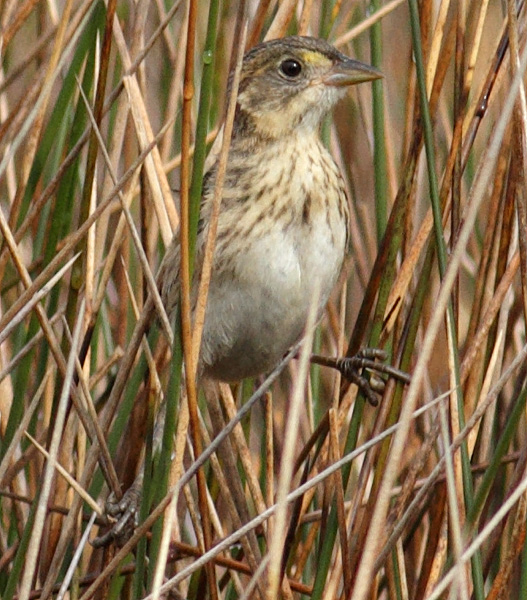
Juvenile Seaside Sparrow - Bethel Beach; August 2014
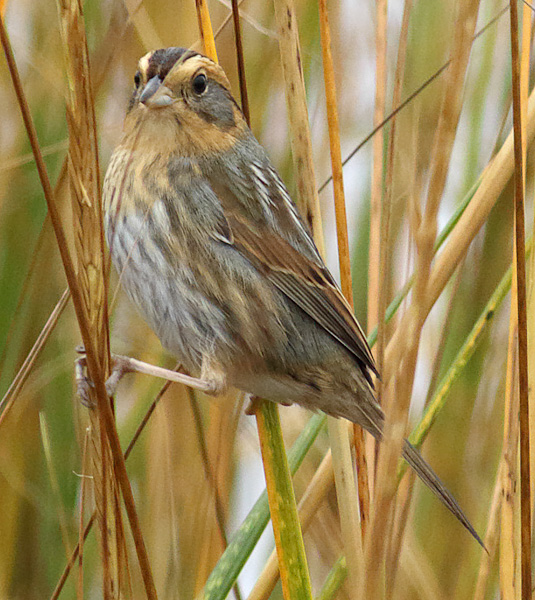
Nelson's Sparrow - Pleasure House Point; November 2014
Walt Childs and I decided to try for the Saltmarsh Sparrow. It was a perfect day for looking. The temperature was in the mid-60s, sunny skies, and no wind. High tide was at 12:10 p.m., and that meant we could leave Nellysford at 9:00 a.m., and make the three hour drive to arrive there just at high tide, missing the rush hour traffic around Richmond.
We arrived at the end of Maryus Road at 11:50 a.m., and in less than a minute or so, saw a sparrow pop out of the marsh grasses, and then back down again. A minute later, a sparrow popped up and flew about 50 feet back from the shore line and landed in the grasses along the road. I walked toward where it had landed, and heard the call of a female Saltmarsh Sparrow. And then a sparrow popped up into view for a couple of minutes. I continued to hear the call from that same spot while I took photos, but the orange facial markings looked too yellow instead of orange, and I wondered if the bird just had pale plumage. After looking at the photos of this bird, I am certain that it was a Savannah Sparrow, and the female Saltmarsh Sparrow must have been near the ground below the Savannah Sparrow.
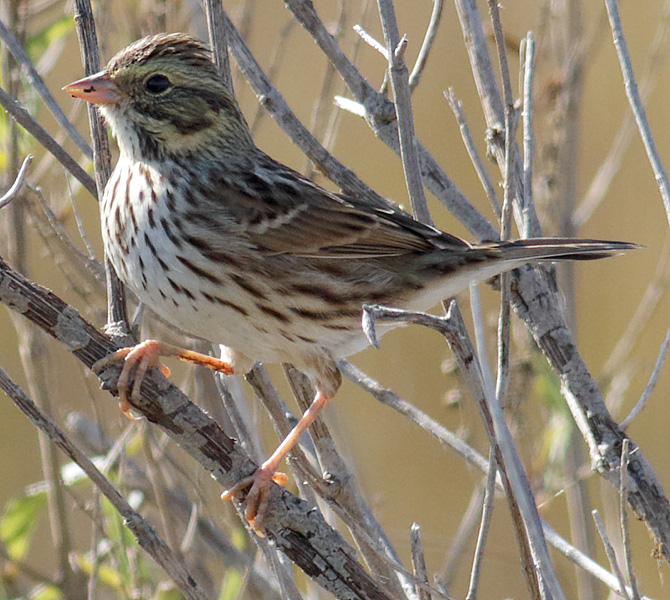
Savannah Sparrow
The Savannah Sparrow then flew back to the shore line, and spent about a minute on the road before hopping into the grasses. I walked back to the shore line and saw a second bird in the grasses, and this one was a Saltmarsh Sparrow (my life bird #613).
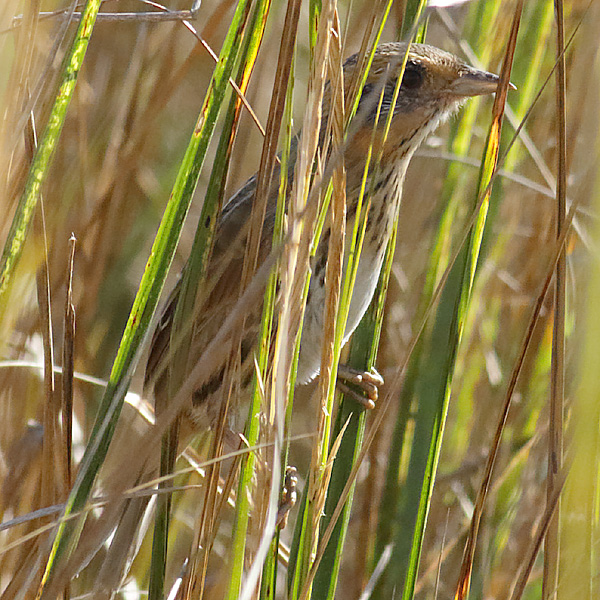
Saltmarsh Sparrow
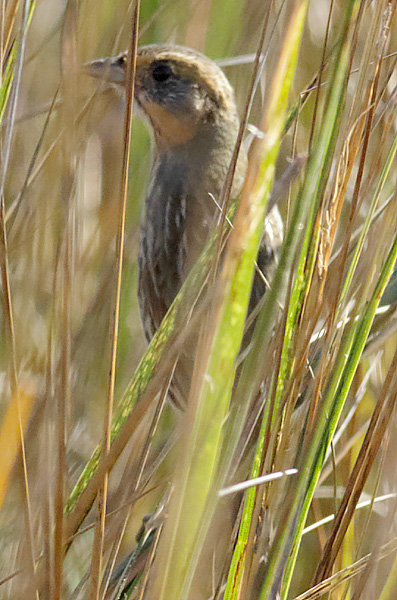
Saltmarsh Sparrow
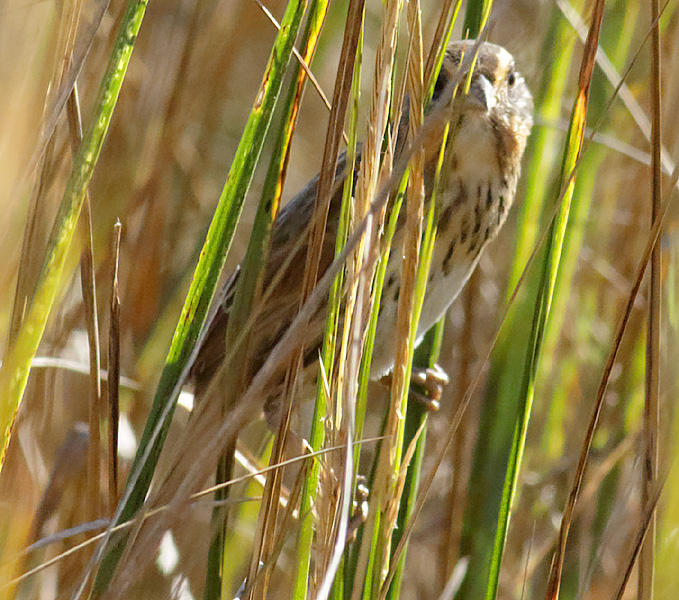
Saltmarsh Sparrow
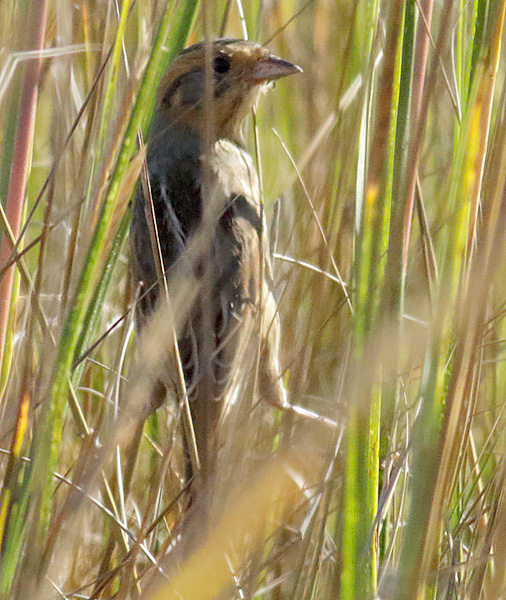
Saltmarsh Sparrow
Walt and I continued to look in that area for a while, but didn't see any more sparrows, other than a Song Sparrow back along the road. We decided to drive to other nearby roads that ended next to the shore line. We saw some other avian species, including a good number of Yellow-rumped Warblers, but no other marsh sparrows.
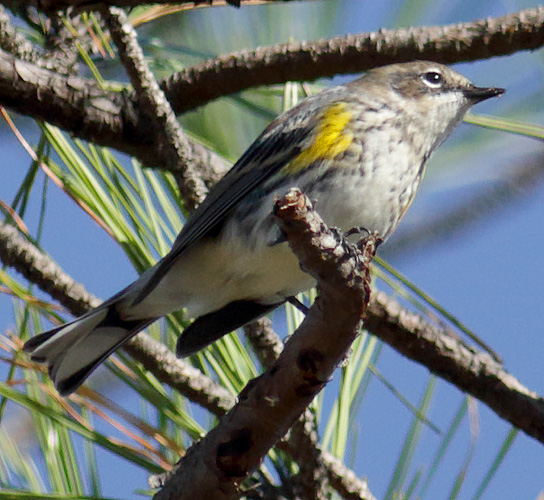
Yellow-rumped Warbler

Carolina Chickadee

Killdeer
We decided to try the end of Maryus Road again, and got there at 2:15 p.m. It was two hours past high tide, and I wasn't expecting to see any more Saltmarsh Sparrows, but we got lucky. There were four of them. One of the sparrows had more breast orange and finer streaking, and may have been either a Nelson's or a Saltmarsh x Nelson's hybrid.
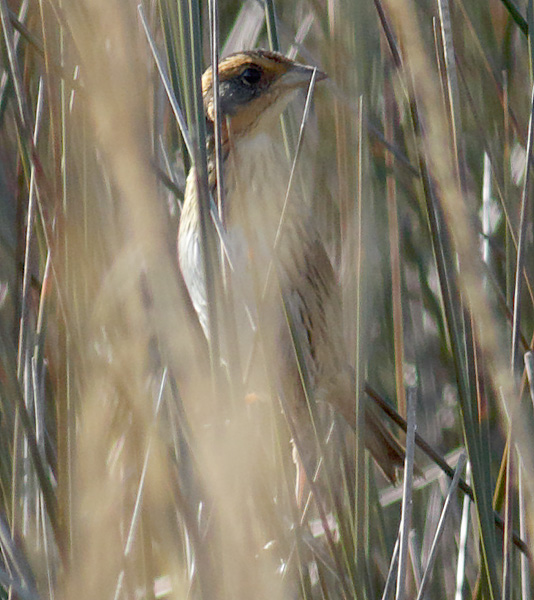
Saltmarsh Sparrow

Saltmarsh Sparrow

Saltmarsh Sparrow

Saltmarsh Sparrows (Nelson's or hybrid at left?)

Saltmarsh Sparrow (Nelson's or hybrid?)

Saltmarsh Sparrow
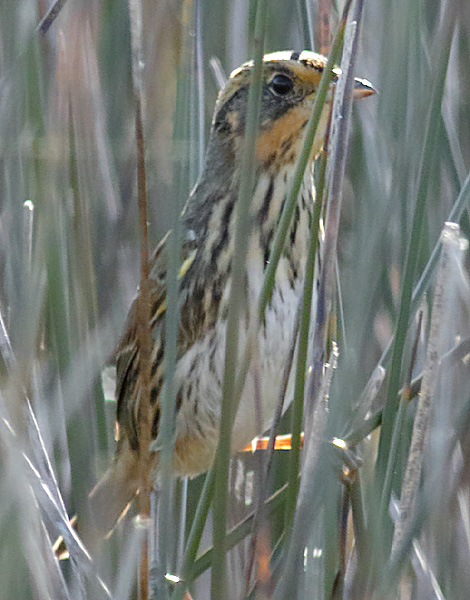
Saltmarsh Sparrow
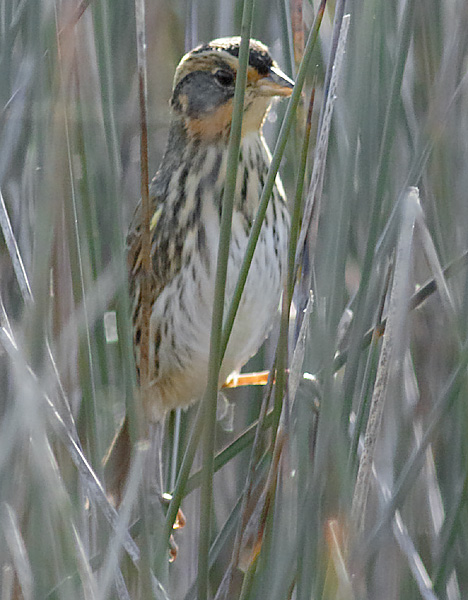
Saltmarsh Sparrow
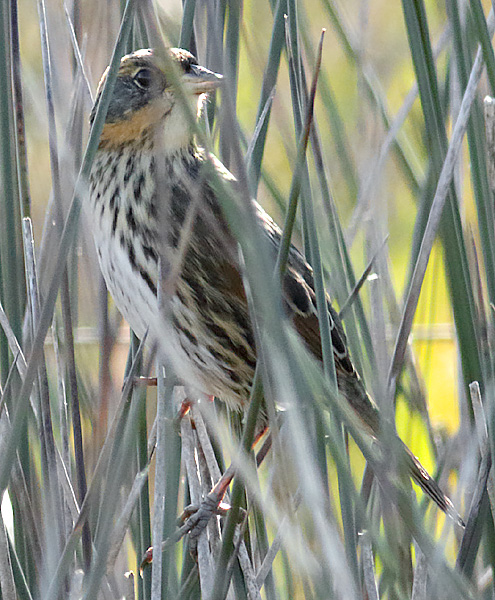
Saltmarsh Sparrow
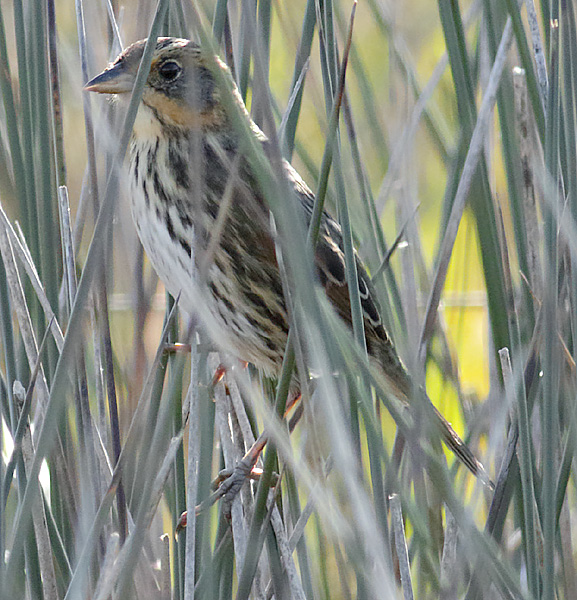
Saltmarsh Sparrow
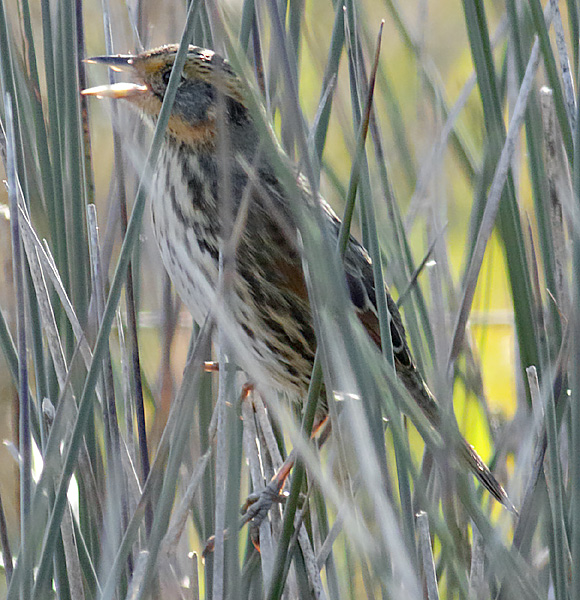
Saltmarsh Sparrow
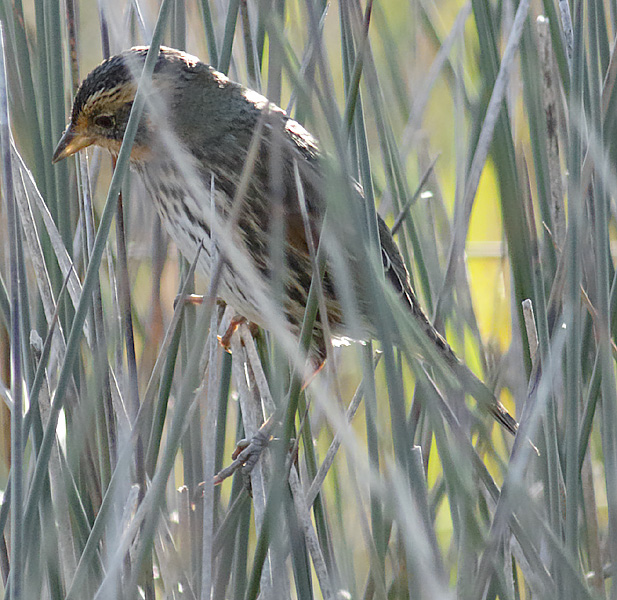
Saltmarsh Sparrow

Saltmarsh Sparrow
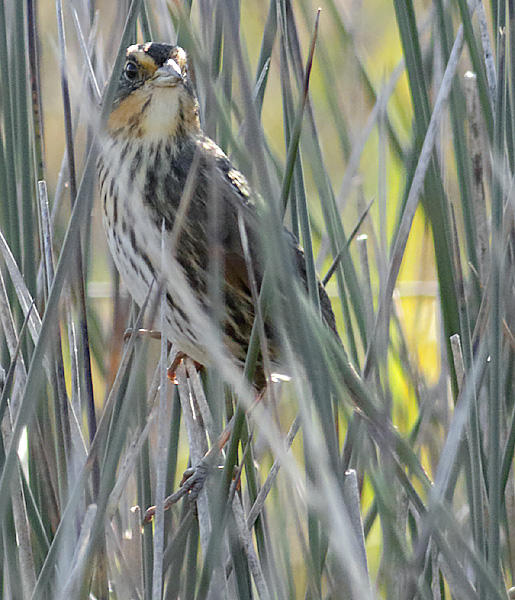
Saltmarsh Sparrow
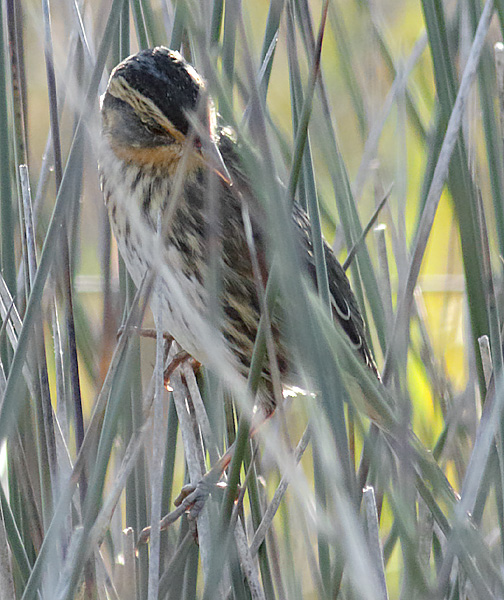
Saltmarsh Sparrow
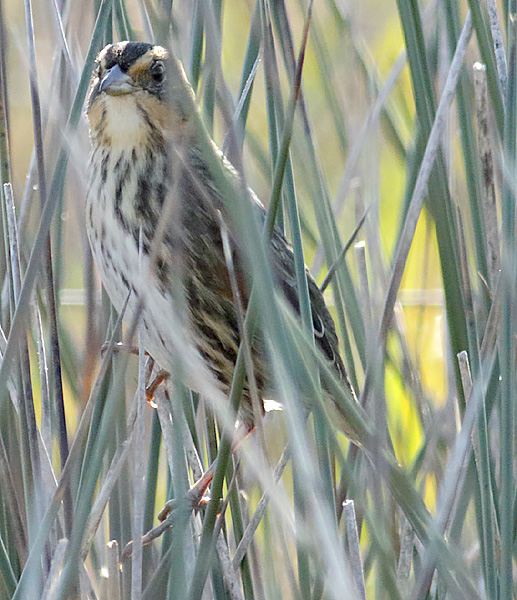
Saltmarsh Sparrow
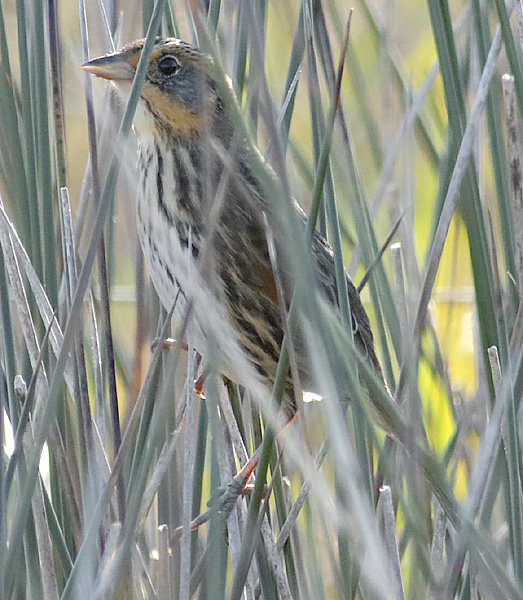
Saltmarsh Sparrow
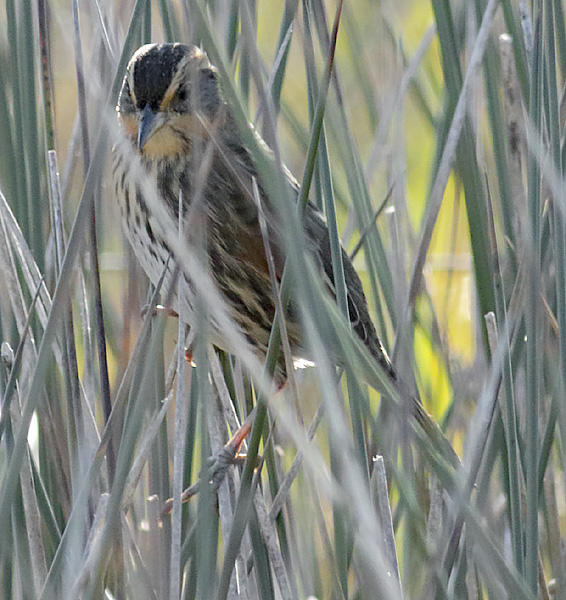
Saltmarsh Sparrow
It really wasn't very "birdy" there, and we ended up with only 20 avian species seen, but we got our target species!